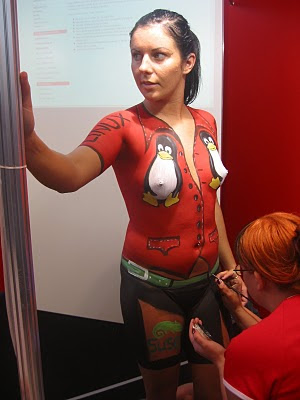With the World Body Painting Festival (and of course the Body Painting Award) coming up on the 17th of July, it's about time to get you all fired up in your body painting know-how.
 Body painting is a form of body art, and has probably been around since the beginning of civilization. In almost every tribalist culture, body painting was performed during ceremonies or merely just for the beauty of it. Back then they used clay and other natural pigments.
Body painting is a form of body art, and has probably been around since the beginning of civilization. In almost every tribalist culture, body painting was performed during ceremonies or merely just for the beauty of it. Back then they used clay and other natural pigments. Body painting still survives in parts of the world, and especially 'Mehndi', the form of body painting that uses henna dyes, is now very popular in the western world. The henna tattoo is semi-permanent.
Body painting still survives in parts of the world, and especially 'Mehndi', the form of body painting that uses henna dyes, is now very popular in the western world. The henna tattoo is semi-permanent. Since the 1960's, body painting emerged as an actual art form. However, there is the never-ending discussion about it's social acceptability because body painting practically always involves nudity.
Since the 1960's, body painting emerged as an actual art form. However, there is the never-ending discussion about it's social acceptability because body painting practically always involves nudity. But no art without paint of course, and you'll be happy to know that the paint is restricted to guidelines: the body paint has to be non-toxic and non-allergenic. The paint easily washes of with water and soap.
But no art without paint of course, and you'll be happy to know that the paint is restricted to guidelines: the body paint has to be non-toxic and non-allergenic. The paint easily washes of with water and soap.As for the henna dyes, which Mehndi uses, there's a difference between the synthetic black henna, and the natural brown henna. The natural henna dye is completely safe when body painting, but the synthetic black henna dye could cause allergic reactions. You should have yourself patch tested before using these at body painting.
This should get you started, next time, more about the festival!
